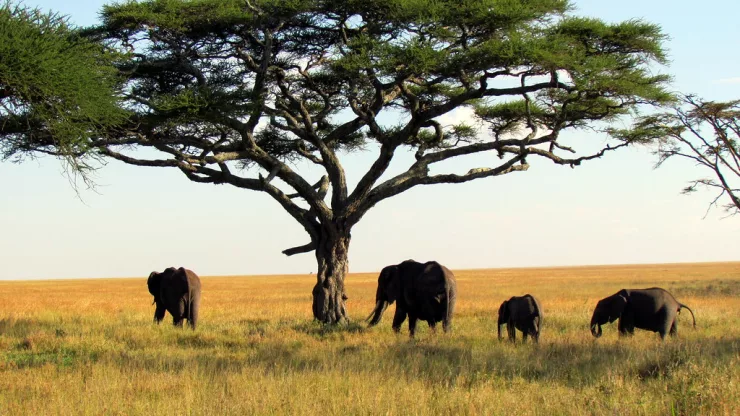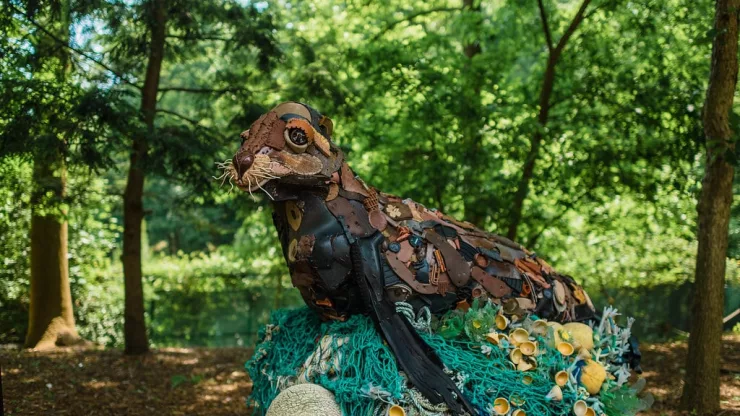Jump to Section
The Giant’s Causeway: A Natural Wonder
The Giant’s Causeway is a natural wonder located on the north coast of Northern Ireland, near the town of Bushmills.
It is a unique geological formation consisting of over 40,000 interlocking basalt columns, which were formed by intense volcanic activity over 60 million years ago.
The site has been a popular tourist destination for centuries, attracting visitors from all over the world who come to marvel at its natural beauty.
But the Giant’s Causeway is not just a geological marvel – it is also home to a diverse range of wildlife, from seabirds and marine mammals to rare plants and insects.
In this article, we will explore the wildlife of the Giant’s Causeway, discover the coastal biodiversity of Northern Ireland, and learn about the conservation efforts that are being made to protect this precious ecosystem.
Wildlife of the Giant’s Causeway
The Giant’s Causeway is a haven for wildlife, with a rich and diverse range of species that live in and around the site.
Here are just a few examples of the wildlife that can be found at the Giant’s Causeway:
-
Seabirds: The cliffs and rocks around the site are home to a variety of seabirds, including kittiwakes, fulmars, razorbills, guillemots, and puffins.
These birds can be seen nesting and feeding in the area throughout the year.
-
Marine mammals: The waters around the Giant’s Causeway are home to a number of marine mammals, including seals, dolphins, and porpoises.
Visitors may be lucky enough to spot these animals from the shore or on a boat trip.
-
Plants and insects: The Giant’s Causeway is also home to a variety of rare plants and insects, including the Giant’s Causeway snail, which is found nowhere else in the world.
Other notable species include the harebell, sea campion, and kidney vetch.
Discover Northern Ireland’s Coastal Biodiversity
The Giant’s Causeway is just one example of the rich and varied coastal biodiversity that can be found in Northern Ireland.
The country’s rugged coastline is home to a wide range of habitats, from sandy beaches and rocky cliffs to salt marshes and dunes.
These habitats support a diverse range of species, from seabirds and marine mammals to rare plants and insects.
Some of the other notable wildlife hotspots in Northern Ireland include:
-
Rathlin Island: This small island off the coast of County Antrim is home to a variety of seabirds, including puffins, guillemots, and razorbills.
It is also a great place to spot seals and dolphins.
-
Strangford Lough: This large sea lough in County Down is a haven for wildlife, with over 2,000 species of plants and animals living in and around its waters.
It is particularly important for its birdlife, with thousands of waders and wildfowl using the lough as a wintering ground.
-
Murlough National Nature Reserve: This sand dune system in County Down is home to a variety of rare plants and insects, including the marsh fritillary butterfly and the pyramidal orchid.
Conservation Efforts at the Giant’s Causeway
The Giant’s Causeway is a protected site, and there are many conservation efforts underway to protect its unique ecosystem. These efforts include:
-
Habitat management: The National Trust, which manages the site, carries out regular habitat management work to maintain and enhance the site’s biodiversity.
This includes removing invasive species, planting native species, and creating new habitats for wildlife.
-
Visitor management: The National Trust also works to manage visitor numbers and behaviour at the site, to minimise the impact on the wildlife and habitats.
This includes providing information to visitors about the site’s ecology and encouraging responsible behaviour.
-
Research and monitoring: The National Trust and other organisations carry out regular research and monitoring of the site’s wildlife and habitats, to better understand the ecosystem and identify any threats or issues that need to be addressed.
The Giant’s Causeway is not just a geological marvel – it is also a vital ecosystem that supports a wide range of wildlife.
By visiting the site and learning about its ecology, we can appreciate the beauty and complexity of the natural world, and help to protect it for future generations.
So why not plan a trip to the Giant’s Causeway and discover the wonders of Northern Ireland’s coastal biodiversity for yourself?
FAQ
What is the best time of year to visit the Giant’s Causeway?
The Giant’s Causeway is a popular tourist destination all year round, but the best time to visit for wildlife watching is usually in the spring and summer months (April to August). This is when many of the seabirds and marine mammals are nesting and breeding, and when the wildflowers are in bloom.
Can you go on a guided wildlife tour of the Giant’s Causeway?
Yes, there are a number of guided wildlife tours available that focus on the wildlife of the Giant’s Causeway and the surrounding areas.
These tours are led by experienced guides who can help you spot and identify the various species that live in the area.
Is the Giant’s Causeway accessible for people with disabilities?
Yes, the Giant’s Causeway has a number of facilities and services in place to make it accessible for people with disabilities.
These include accessible parking, toilets, and visitor centre facilities, as well as a shuttle bus service to take visitors down to the shore.
I’m a nature enthusiast and creator of Metro Wilds and have spent years exploring the great outdoors.
With a passion for environmental conservation and sustainability, I have dedicated my career to writing about the beauty and wonders of nature, as well as the threats facing our planet.
Contact me at [email protected] for assistance.





